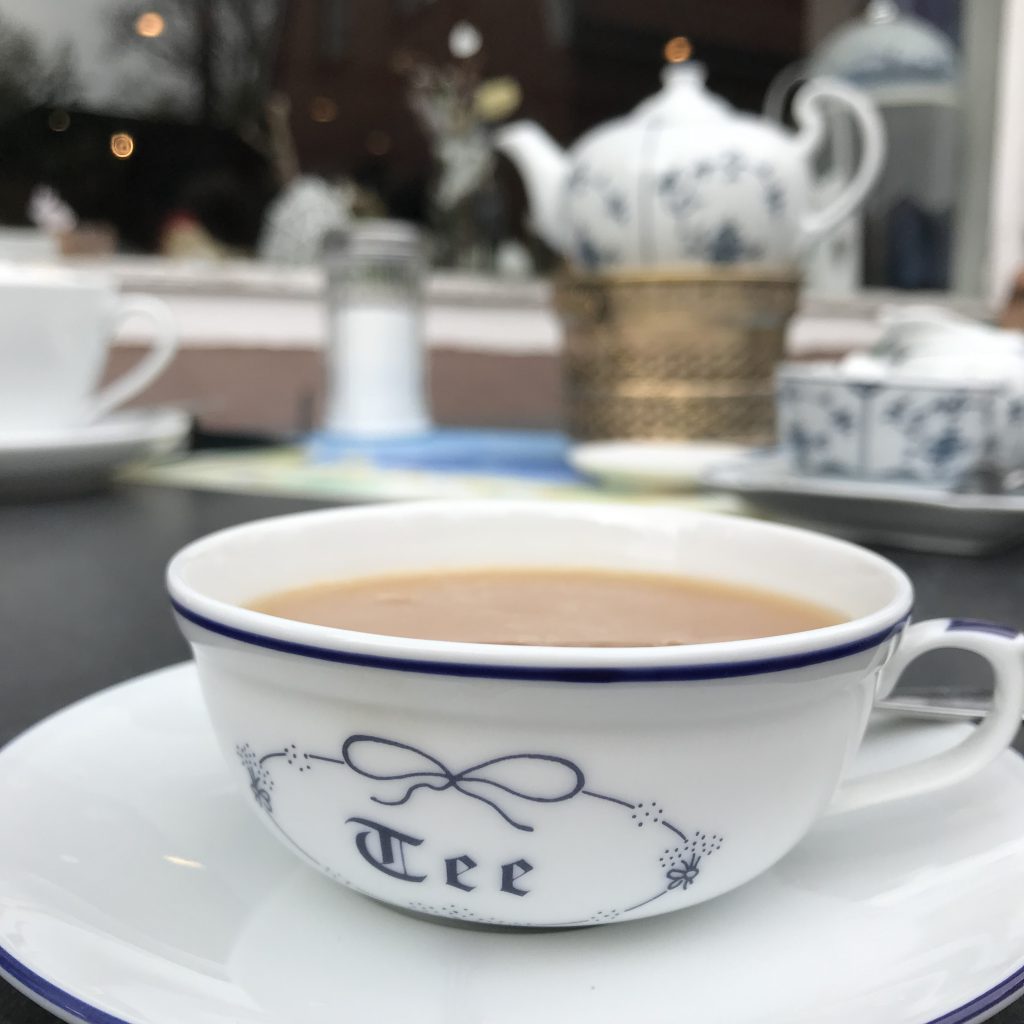
Ostfriesentee — Double diffusion in a tea cup
Showing double-diffusive mixing in tank experiments is a pain if you try to do it the proper way with carefully measured temperatures and salinities. It is, however, super simple, if you go for the quick and dirty route: Cream in tea! Even easier than the “forget the salt, just add food dye” salt fingering experiment I’ve been recommending until now.

The result of double-diffusive mixing of cream in tea is probably familiar to most (see above), but have you ever looked closely at the process?
Below, we pour cold cream into hot tea. The cream initially sinks to the bottom of the tea cup, but then quickly heats up and fingers start raising to the surface of the cup. They are visible as fingers because while the heat has quickly diffused into the cream, the actual mixing of substances takes longer and the opaque milk stays visible in the clear tea. Only when the fingers have risen to the surface the substances begin to mix due to shear and diffusion of substances. Hence the name “double diffusion”: First diffusion of heat, then of particles afterwards.
Pretty cool, isn’t it?
If you happened to stir the tea before pouring the cream, it looks even more awesome. Home-made galaxies :-)
And isn’t it fascinating how the blob of cream in the middle of the cup stays intact for quite some time?
So now you know the only reason why I am drinking black tea: So I can do salt fingering experiments with it! :-)
What’s #kitchenoceanography all about? | Dr. Mirjam S. Glessmer says:
[…] of kitchen oceanography include processes related to ocean circulation, density stratification, mixing of fluids, salinity of sea water, ice formation, but also visualize methods like e.g. ice […]
Rambling a bit about why I am blogging, and about why I love watching Latte (#kitchenoceanography, of course!) | Dr. Mirjam S. Glessmer says:
[…] above — do you know the process causing the layers is very similar to the one that caused the awesome fingers and rings in my tea the other day? You should check out this blog post for what’s going on there […]